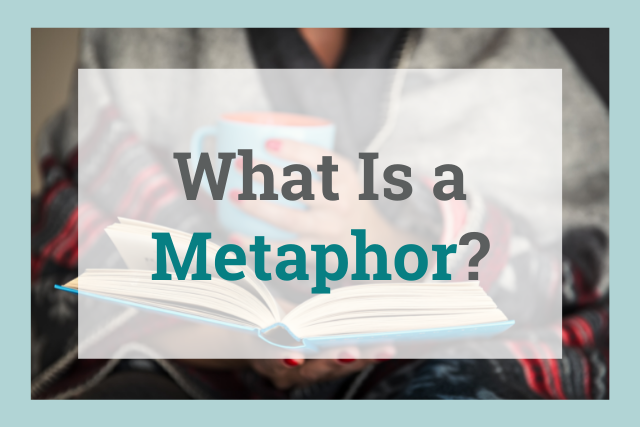
Rhetorical devices enhance writing in many different ways, from creating images to emphasizing important ideas. One of the most common—and most powerful—devices is metaphor.
What is a metaphor and why should you use them in your writing? Today, we’re diving deep into this literary device. We’ll cover the definition of metaphor, the different types of metaphor, and how it differs from other figurative language. We’ll also look at several metaphor examples from literature and other sources.
What Is a Metaphor?
A metaphor is a type of figure of speech that compares one thing to another unlike thing.
It’s a direct comparison between two things that may not appear similar at all. Metaphors directly state that one thing is another.
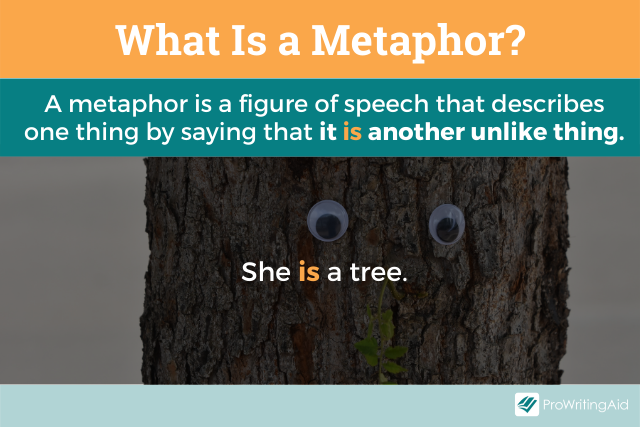
Metaphors are an example of figurative language because they aren’t meant to be taken literally. For example, Pat Benatar’s hit song, "Love is a Battlefield" is a metaphor. Clearly, love is not a literal battlefield. There are no actual soldiers or weapons. When she compares love to a battlefield, she means that you have to fight for love and you might get hurt in the process.
There are many literary devices that compare things. We’ll cover the difference between metaphor and several other types of rhetorical devices later in the article. For now, know that metaphors do not use like or as to make the comparison.
Why Should I Use Metaphors in My Writing?
Metaphors can serve many functions in writing. They’re a powerful tool for enhancing your work, whether you’re writing fiction, nonfiction, speeches, or essays. We use metaphors all the time in our everyday speech, but the deliberate use of metaphors can enhance your writing.
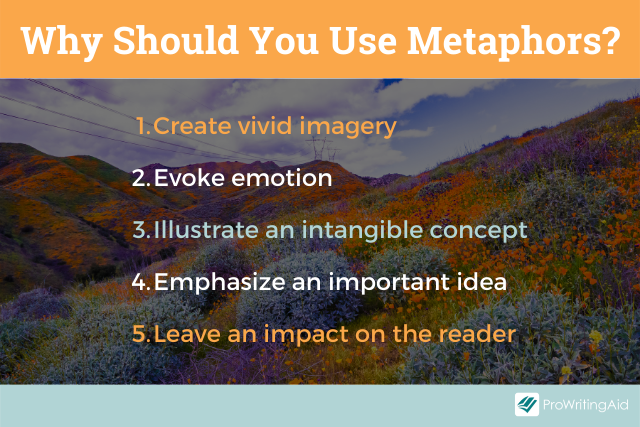
Metaphors can evoke emotion and create vivid images in your readers’ minds. They are useful for explaining abstract, intangible concepts in a way that’s easy to understand. Metaphors provide emphasis on important ideas and can leave a lasting impact on readers.
One of the most famous metaphor examples in literature comes from Shakespeare’s Romeo and Juliet.
"What light through yonder window break? It is the East, and Juliet, the sun."
Imagine if Romeo had said, "Is that the very beautiful Juliet in the window? She’s so gorgeous and my whole world revolves around her."
Less impactful, right? It just doesn’t hit the same way. Through metaphor, we can feel how Romeo feels about Juliet. Juliet isn’t literally the sun, but she is that important to him. He doesn’t just tell the audience how much he loves her; he shows us. Love is an abstract concept, but the metaphor makes it almost tangible.
This is what makes metaphor such a powerful tool for writers. We can bring the audience into the world we’ve created in new, impactful ways.
What Are the Different Types of Metaphors?
There are several types of metaphors that you may encounter. Some metaphors are explicit. It’s easy to see the comparison in these. In our Romeo example, he is directly calling Juliet the sun. It’s not hard to figure out what he means. If you say, "He was a prince" about a love interest who is not, in fact, royalty, we know that you mean he was charming, handsome, and polite.
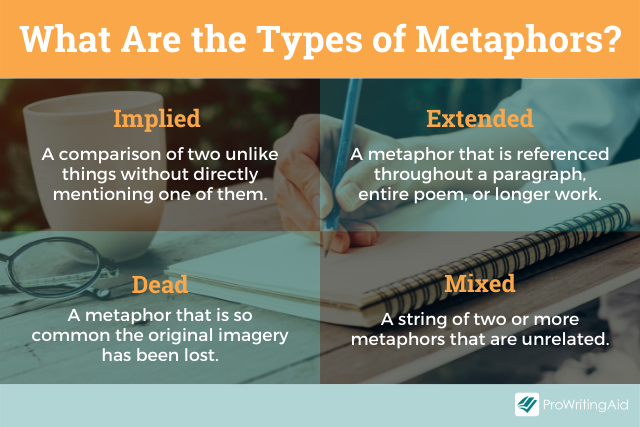
What Is an Implied Metaphor?
An implied metaphor, on the other hand, has more nuance in the comparison. An implied metaphor compares two unlike things without directly mentioning one of them. For example, you might say, "their love blossomed." This metaphor compares love to a flower, but it doesn’t actually say it’s a flower.
Extended Metaphors
An extended metaphor is exactly what it sounds like: a long metaphor! Instead of just one line and one comparison, the metaphor extends throughout a longer piece of writing. Some poems are entirely extended metaphors. Extended metaphors can also take place over a paragraph or more in literature. Writers may also return to the extended metaphor throughout an entire work, referencing it many times as the story progresses.
What Is a Dead Metaphor?
You probably use dead metaphors all the time without realizing it!
A dead metaphor is a metaphor that has become so common, the imagery it evokes has been lost. Many of these dead metaphors are common figures of speech in our language, often becoming idioms or even clichés.
One example of a dead metaphor is describing someone as a "laughing stock." We know it means that someone is completely humiliated and isn't taken seriously at all. It comes from the times when courts punished people by placing their hands and arms in stocks. People would come up to ridicule them, throw things on them, and otherwise harass them to punish them for a crime. Dead metaphors are also called historical metaphors because they often have historic roots.
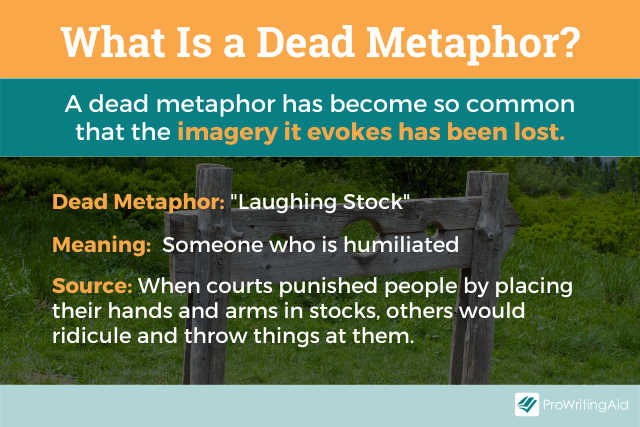
Mixed Metaphors
Mixed metaphors are when two or more metaphors are strung together, often in a way that is nonsensical. A mixed metaphor uses incongruous comparisons, which can hinder meaning. Here’s an example of a mixed metaphor:
"She was a beacon of strength, sailing forth to climb the mountain of success."
First, she is compared to a beacon, then she sails like a boat and climbs a mountain. Beacons don’t sail or climb. Sailing and climbing a mountain are not at all related. The mixed metaphor becomes more and more confusing.
Scholars and writers disagree on whether we should use mixed metaphors at all. There’s no hard and fast rule, but it’s always a good idea to ask yourself if there is a simpler, more cohesive way to make a comparison.
How Do You Identify a Metaphor?
Identifying metaphors can be tricky because there are several other types of figurative language that are similar. Let’s look at a few of these so we can understand the difference between metaphors and other comparative literary devices.
What’s the Difference Between a Metaphor and a Simile?
Metaphors and similes are very similar. They both compare two unlike things, and they serve many of the same functions in our writing. The key difference is that similes use "like" or "as" to show the comparison.

A famous example of a simile is from the movie Forrest Gump. Forrest says, "Life is like a box of chocolates. You never know what you’re going to get." He uses "like" to compare life to a box of chocolates.
If we turned that quote into a metaphor, it would say, "life is a box of chocolates." The comparison is more direct without like or as.
What’s the Difference Between a Metaphor and an Analogy?
Analogies and metaphors are easy to confuse, especially because many analogies use metaphors! The difference lies in their function. The goal of an analogy is to explain a concept. Metaphors are used more poetically to create vivid imagery or emphasize an idea.
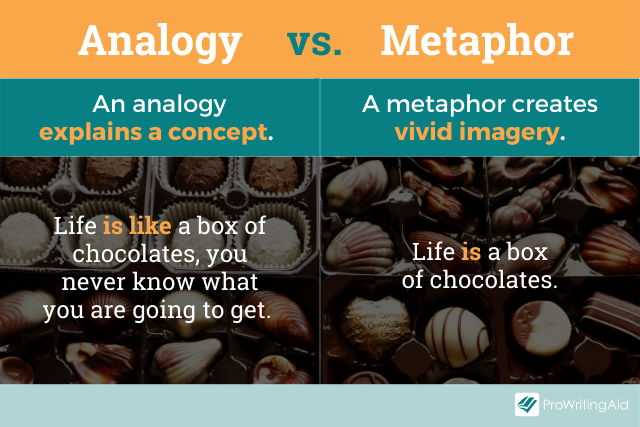
Here’s an example of an analogy: "He’s a warrior in the boardroom, fighting stodgy board members with graphs and slideshows the way a soldier fights with guns and bombs."
There’s a metaphor in there because he is compared to a warrior. But then the comparison is explained, creating an analogy.
Can an Expression Be Both an Idiom and a Metaphor?
Some metaphors, especially dead metaphors, become idioms. An idiom is a figure of speech that doesn’t make literal sense but it becomes an understood part of the language.
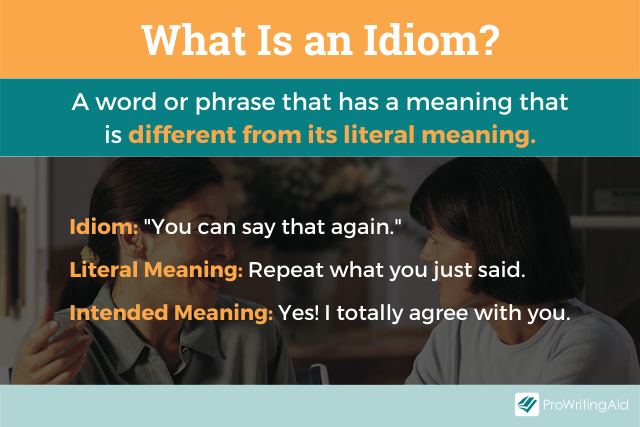
"This town has gone to the dogs" and "I have a green thumb" are both examples of idioms. An example of a metaphor that is also an idiom is, "I’m an open book."
Overused idioms and dead metaphors can become clichés. Check out ProWritingAid’s Clichés Report to look for these exhausted figures of speech. Then you can try to freshen them up with a new, creative metaphor.
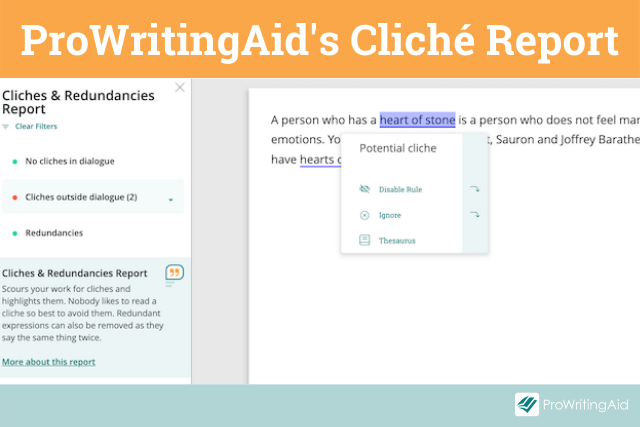
Sign up for a free account and try it for yourself.
Is a Metaphor the Same as a Symbol?
Symbolism is a commonly used literary device. It serves many of the same functions as metaphors, such as evoking emotion or illustrating an abstract idea. However, a metaphor compares two unlike things, while a symbol represents one specific thing, usually a theme or other intangible concept.
In Beauty and the Beast, the wilting rose symbolizes the Beast’s fading chance at redemption. It is not comparing two things, so it is not a metaphor. However, the Beast himself is a metaphor for the cruel, selfish parts of the Prince's personality. The story compares these undesirable traits to a vicious monster.
What Are Some Examples of Metaphors?
You can find metaphor examples in books, movies, songs, and even everyday conversations. We’ve curated a few examples of metaphors below.
What Are Some Good Examples of Sentences with Metaphors?
Metaphors aren’t only found in the classics. Here are a few examples.
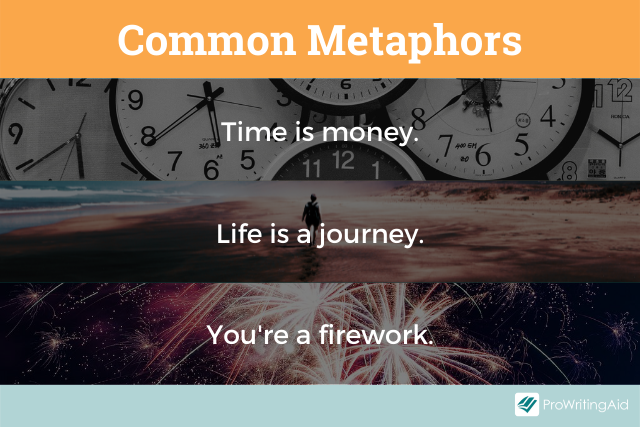
- This office is a prison.
- Her smile was a warm blanket on a snowy day.
- I’m drowning in housework.
- You’re on thin ice, buddy!
- Rivers flowed down her face in sorrow.
Pay attention to phrases you hear in the real world. How many of them are metaphors?
What are Examples of Metaphors in Literature?
You can find examples of metaphors in just about any piece of fiction and in most poems. Here are a few of our favorite metaphor examples from literature.
"All the world’s a stage, and all the men and women merely players"—William Shakespeare, As You Like It
"My thoughts are stars I cannot fathom into constellations."—John Green, The Fault in Our Stars
"He was a poison snake, and I was another, and on such terms we pleased ourselves."—Madeline Miller, Circe
"I am the master of my fate / I am the captain of my soul."—William Wordsworth, "Invictus"
What are some of your favorite metaphor examples? Do you use metaphors in your writing? Let us know in the comment section.


